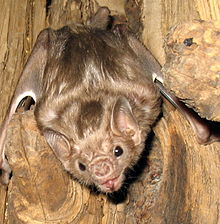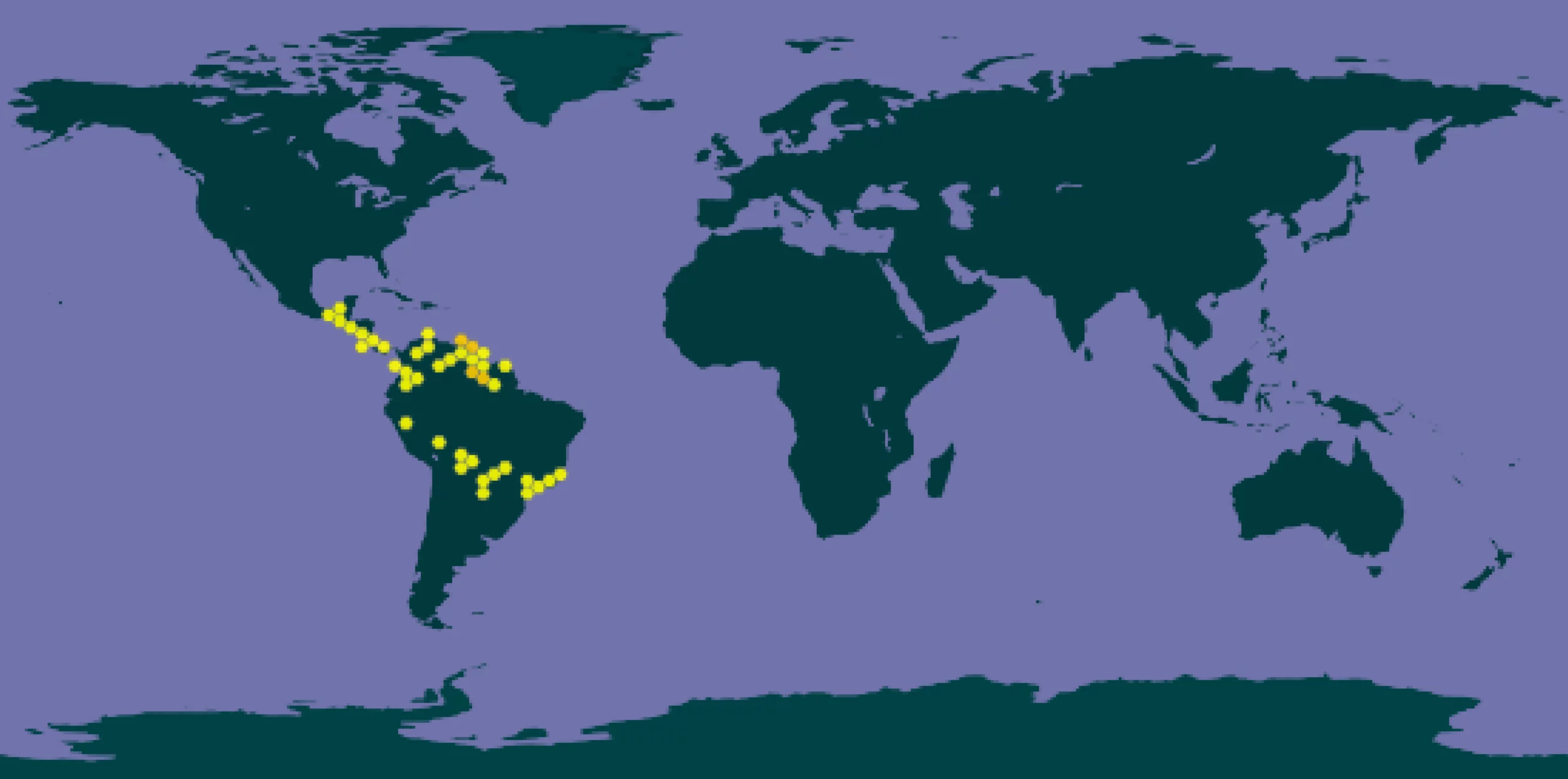Diaemus youngi Jentink, 1893
White-winged vampire bat

| Kingdom | Animalia |
| Phylum | Chordata |
| Class | Mammalia |
| Order | Chiroptera |
| Family | Phyllostomidae |
| Genus | Diaemus |
| Species | Diaemus youngi Jentink, 189 |
Listen to the SONIFIED SPECIES

Known records of this species

Taxon Description
The white-winged vampire bat (Diaemus youngi), a species of vampire bat, is the only member of the genus Diaemus. They are found from Mexico to northern Argentina and are present on the islands of Trinidad and Margarita.
Etymology and taxonomy
The white-winged vampire bat was described by Dutch zoologist Fredericus Anna Jentink in 1893. Dr. Charles Grove Young (1849–1934) is the eponym for the species name youngi. Jentink decided to honor Young with the species name because “our Museum is indebted [to him] for so many additions to its collections of the British Guyana animals.” When it was described by Jentink in 1893, it was initially placed in the same genus as the common vampire bat, Desmodus. However, in 1907, Gerrit Smith Miller Jr. placed it in a new genus, Diaemus. That move to a new genus was not immediately accepted, however, with authors continuing to place it in Desmodus until at least 1982.
Description
Their fur is clay-colored, light brown, or dark cinnamon brown. The outline of their wings is white, as well as the membrane between their second and third finger. Their ears are longer than they are wide, at 18 mm (0.71 in) long. The anterior surface of the tragus is hairy, and its outer margin is smooth, unlike that of the common vampire bat, which is serrated. Their thumb is much shorter than that of the common vampire bat. Their forearms are 51–54 mm (2.0–2.1 in) long. The calcar is absent. Their dental formula is 1.1.1.22.1.2.1, for a total of 22 teeth; the common vampire bat has 20 teeth and the hairy-legged vampire bat 26, respectively.